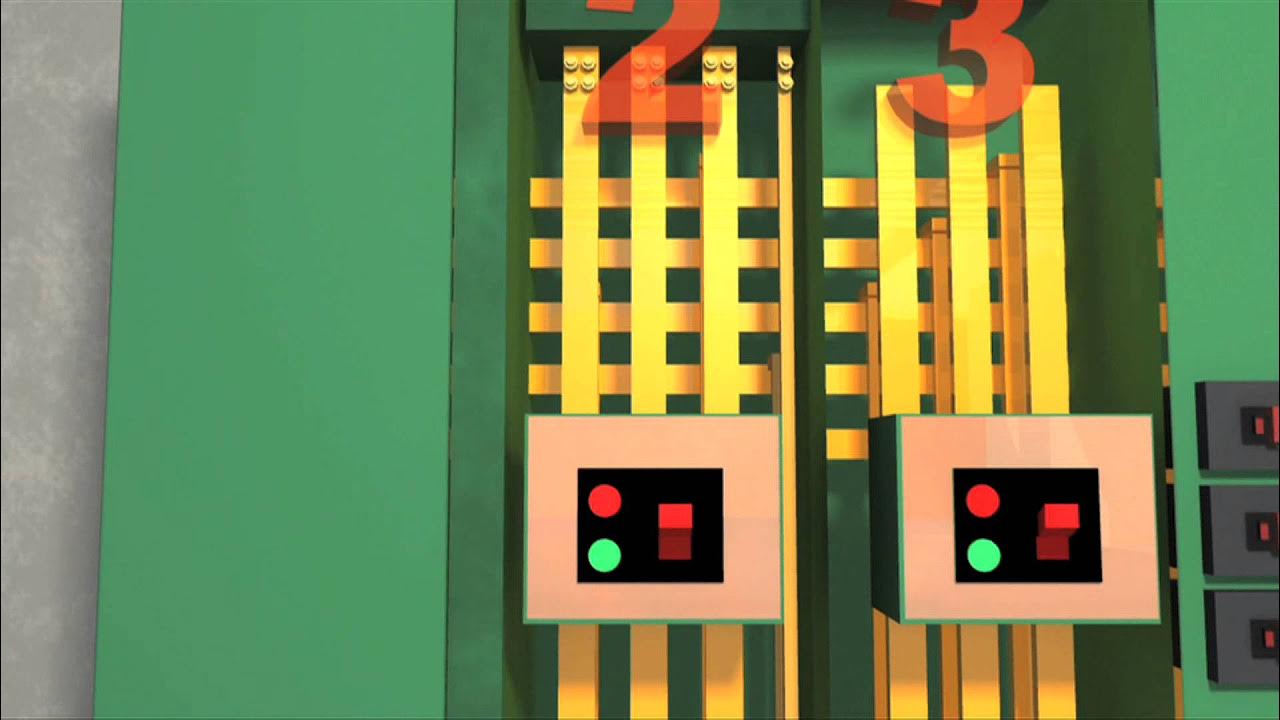Transformer | Electric Transformer | Types of Transformer | Losses in Transformer in Hindi | Stepup
Summary
TLDRThis video provides an in-depth explanation of transformers and electrical systems. It covers the concepts of dry electric losses, the causes of transformer sounds, and the various losses that occur inside transformers. The speaker explains the differences between step-up and step-down transformers, discusses the role of MCBs for electrical safety, and highlights the importance of insulators in transmission lines. Additionally, the video touches on how to calculate the voltage in a system by counting insulators, offering both technical details and practical insights into electrical systems and components.
Takeaways
- 😀 Transformers experience energy loss due to insulators, referred to as 'dry electric loss'.
- 😀 Magnetostriction causes a noise in transformers as a result of magnetic field-induced physical deformation.
- 😀 Transformers consist of primary and secondary windings that enable stepping up or stepping down voltage.
- 😀 Transformer noise is a byproduct of energy loss due to the magnetic field fluctuations in the system.
- 😀 MCBs (Miniature Circuit Breakers) are used to control electrical circuits and come in various categories.
- 😀 Transmission lines use high-voltage transmission towers to transmit power across long distances.
- 😀 Insulators are critical components in transmission lines to prevent energy loss and short circuits.
- 😀 The number of insulators on a transmission line can be used to estimate the voltage level.
- 😀 A higher number of insulators indicates a higher voltage level on the transmission line.
- 😀 Transformers have medical-related issues like varying losses in primary and secondary windings.
- 😀 The speaker will discuss further details in the next video, covering additional aspects of transformers and transmission lines.
Q & A
What is meant by 'dry electric losses' in transformers?
-Dry electric losses refer to the energy losses that occur due to insulation issues within a transformer. These losses result in inefficiencies in the transformer’s operation, often leading to sound generation as the transformer works.
How do magnetization losses occur in transformers?
-Magnetization losses occur when energy is required to magnetize the core of the transformer. These losses happen due to the resistance in the material used for the core, and they contribute to the generation of sound during transformer operation.
What causes the sound produced by transformers?
-The sound produced by transformers is a result of the mechanical vibrations caused by the magnetizing current in the transformer. These vibrations are caused by the energy being transferred and converted inside the transformer, which generates acoustic waves.
What is the difference between step-up and step-down transformers?
-A step-up transformer increases the voltage from the primary coil to the secondary coil, while a step-down transformer decreases the voltage from the primary coil to the secondary coil. The primary coil in a step-up transformer has fewer turns, while in a step-down transformer, it has more turns.
How do transformers contribute to electrical losses?
-Transformers contribute to electrical losses primarily through core losses (such as magnetization losses) and copper losses (due to resistance in the windings). Additionally, insulation losses can occur, which are referred to as 'dry electric' losses.
What is the role of insulators in transmission lines?
-Insulators are used to support and electrically isolate the transmission lines from the supporting towers, preventing electrical currents from flowing into the ground. They also help in maintaining the stability and safety of the electrical system.
How can the voltage rating of a transmission line be determined from the insulators?
-The voltage rating of a transmission line can be estimated by counting the number of discs on the insulators. More discs generally indicate a higher voltage rating, as each disc provides a level of insulation.
Why do transmission lines produce sound?
-Transmission lines produce sound due to the movement of electrical energy, which can cause vibrations in the conductors and insulators. These vibrations can generate acoustic waves, which are heard as noise.
What are the different categories of MCBs (Miniature Circuit Breakers)?
-MCBs are categorized based on their current rating and response time. Different types include Type B (for residential use), Type C (for commercial use), and Type D (for industrial use). These breakers help in protecting electrical circuits from overloads and short circuits.
What is the significance of insulation in transformers and transmission lines?
-Insulation is crucial in transformers and transmission lines as it prevents short circuits, ensures proper current flow, and reduces the risk of energy loss. It also helps in maintaining safety standards by preventing electrical shock and fire hazards.
Outlines

This section is available to paid users only. Please upgrade to access this part.
Upgrade NowMindmap

This section is available to paid users only. Please upgrade to access this part.
Upgrade NowKeywords

This section is available to paid users only. Please upgrade to access this part.
Upgrade NowHighlights

This section is available to paid users only. Please upgrade to access this part.
Upgrade NowTranscripts

This section is available to paid users only. Please upgrade to access this part.
Upgrade Now5.0 / 5 (0 votes)





